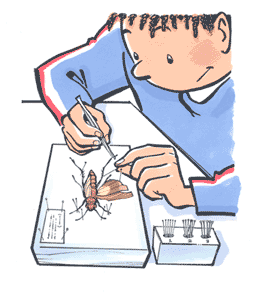Building an insect collection requires specific protocol, methods and materials for insect collection and related data collection, specimen display, species determination and canning. This article, the precedents and the following are therefore intended to present how I proceed.
How to kill collected insects?
Many methods are used, all with their advantages and disadvantages. Some use chemicals and harmful products. For my part, I prefer not to use them and to content myself with techniques that are safe and just as effective.
– Freezing : the easiest practice and requiring no precautions and chemicals. It consists quite simply in leaving the specimens caught in the freezer for several hours, even several days, because some species resist freezing well. This method is suitable for all types of insects (butterflies, ants, dragonflies, beetles…). On a personal basis, I use freezing especially for winged insects like Odonates (dragonflies) and Lepidoptera (butterflies).
– Ethanol : This involves immersing insects in alcohol at 70°, or even 90° (shortly, then diluted). This practice has the advantage of killing insects as soon as they are captured in the field, which prevents them from getting damaged in the tubes during the hunting season. Moreover, their conservation can be done during months without deterioration, in the freezer, the fabrics dry out and harden with time. I use ethanol for all types of insects, less for Odonates (dragonflies) and Lepidoptera (butterflies) because of their size.
Methods that use potentially harmful chemicals are:
– ethyl acetate (=acetic ether) is odourless and highly volatile, whose fumes may be toxic to humans. For that, he asks to use a hermetic glass container. It is not recommended for butterflies because their wings degrade when too much ethyl acetate is present.
– Cyanure of potassium is a very violent poison that must be handled with great caution. Hence the fact that I strongly advise against it.
– Ammoniaque is used to kill very large insects like Beetles and Lepidoptera (butterflies) by injecting them with a syringe. A few drops are enough to instantly kill the insect.
I am, of course, at your disposal for any questions, requests for advice, tips and/or expertise. Do not hesitate to contact me here. Looking forward to reading and helping you!


